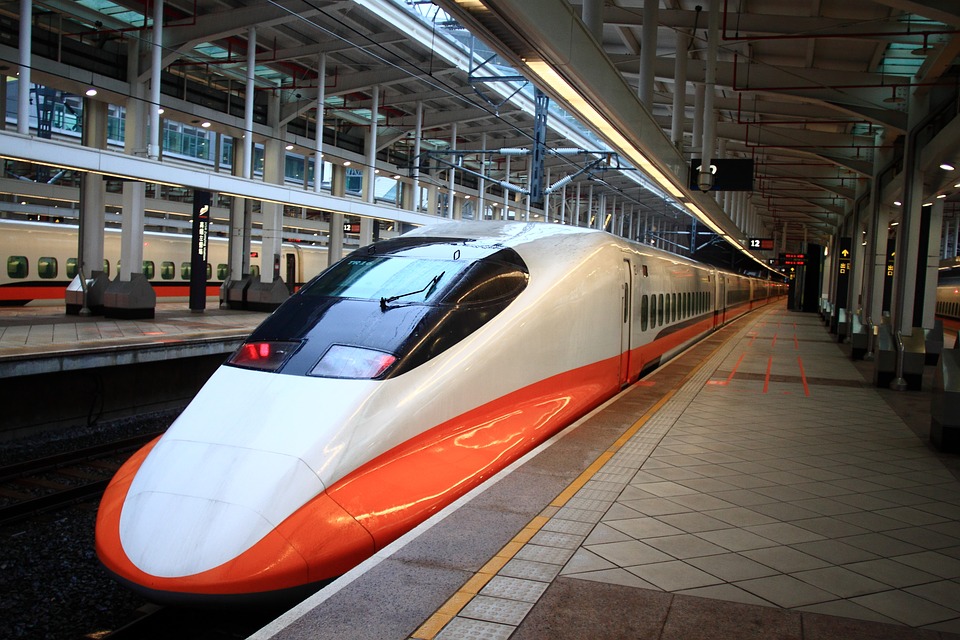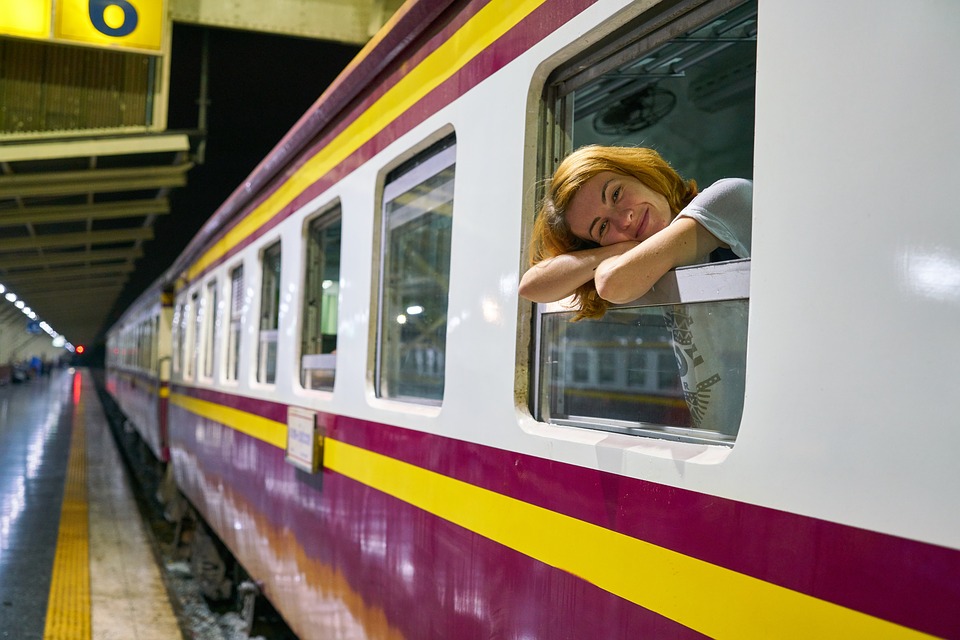
Ever heard of the word “Maglev train”?
If you think the bullet train is the fastest train in Japan, well, you will soon be officially wrong starting in 2027. The brand new Maglev Train will officially be faster than the famous bullet train in Japan.
It’s quite common to refer to the bullet trains, also known as “shinkansen” in Japanese, everywhere in Japan nowadays. These shinkansen run at speeds ranging from 110-300km per hour. It depends on the specific types of shinkansen, but here are two of the recorded speeds:
1. Tohoku Shinkansen (section of the line: Utsunomiya-Morioka)
Tohoku Shinkansen run at the speed of about 320km per hour.
2. Sanyo Shinkansen (section of the line: Himeji-Hakata)
Sanyo Shinkansen run at the speed of about 300km per hour.
Imagining how fast these trains run can be pretty hard to grasp, however, the reason why these shinkansen can go at such amazing speed, is because they run underground and run in mostly straight lines and avoid as many curves as they can.
So, what about Maglev trains? What’s the difference between Shinkansen and Maglev Trains? The new Maglev Train is considered the future of transportation after being built with the latest technology in Japan.
1. How Will The Maglev Trains in Japan Work?

Maglev trains are basically bullet trains which run between Osaka and Tokyo for about one hour. If we want to talk about the exact speed, the maglev trains can run upwards of 500km per hour. Normally it takes about 3 hours to travel to Osaka from Tokyo when utilizing the bullet trains, but maglev trains run less than half that time and will be a major time-saving option for anyone that is in need of that convenience in the future.
Maglev trains will run not directly on the train rails that are underground but run above the guideway hanging in the air by using a superconducting magnet. It’s like using the same logic system as the north and south magnets. The maglev train will hang in the air about 10cm from the ground – it’s like a floating train!
A brand new shinkansen line called “Linear Chuo Shinkansen” is working very hard to start this Maglev train business in 2027 in Japan. Even if you already know this news or not, this new business is gathering massive attention from around the world. Not only is it gaining popularity for how fast it runs, but how much it costs to make the train. It cost about 9 trillion yen at the moment and that is even before completion!
Here is the latest train section schedule as follows:
1. Train section from Shinagawa to Nagoya, scheduled to be started in around 2027. The cost of building this train section is about $5 trillion (500 billion yen) at this moment.
2. Train section from Shinagawa to Shin Osaka, scheduled to start around 2045. The cost for building this train section is about $3 trillion (600 billion yen) at this moment.
This is the perspective schedule but this plan may be ahead of schedule.
Now, you are most likely wondering what the price to get in the maglev train is, here is the perspective price for maglev train compared to the normal shinkansen (bullet train).
For example, the train section from Shinagawa station to Nagoya station
Time:
Shinkansen = about 1 hour and 40 minutes
Maglev train = about 40 minutes
Price for a non-reserved seat:
Shinkansen = about 10,360 yen
Maglev train = about 11,790 yen
As you can see this, the price may not change all that much but the length of time will be shortened significantly. The power of technology is just so amazing. Don’t you think so?
2. What is Maglev Called in Japan?

If you’re a native English speaker, you may already know what the word “maglev” means. Maglev stands for “magnetic levitation” and this is the system of train use 2 sets of magnets to run the floating train. It’s Quite common to express the word maglev in English, but how would you say this in Japanese?
Japanese people call maglev train a “Linear Motor Car” (we say “リニアモーターカー” in katakana) and normally people refer to it as just “Linear” (リニア) as an abbreviation.
Many of you may find the word used to express it to be a bit strange because a maglev train is obviously not a car, but somehow Japanese people like to refer to it as one. Yoshihiro Kyotani, who is the system developer of the maglev train in Japan, decided to name the train as “Linear motor car” because he felt this would express that the railroad vehicle runs on a linear motor and not conventional means. So, it’s clear that the word “Linear motor car” is original in some way. As you can see the reason for this name “Linear motor car” for the Maglev train, you must know this is Japanese-made English which is called “Wasei-Eigo”, basically, it’s English that isn’t native English.
3. Where Can You Ride the Maglev in Japan?

Are you interested in getting a spot on the super-fast maglev train now? Well, there’s a chance to be one of the first by winning a special lottery ticket through following the steps listed on their website.
1. First, go to the website “リニア中央新幹線” in Japanese with having the title of home page called “超電導リニア” which means “Superconducting Maglev” in English. Website link here: https://linear-chuo-shinkansen.jr-central.co.jp
2. There will be an announcement every now and again for test rides with the dates listed. If you want to try having the test ride of maglev train, you can apply from this Superconducting Maglev homepage website by either PC, phone or call directly. This is not something that you can experience any time you want, but you need to check the website pretty often to see if there are any announcements for test ride lottery.
3. This is not on a first-come-first-serve system because it is a lottery, but this allows for everyone the equal chance to experience the new train! If you luckily win the lottery for the ticket, you will be informed that you were selected and offer you the ticket for the available dates.
4. However, maglev train test ride tickets are not FREE and you will need to pay a certain amount. Applying for the maglev train test-ride ticket is very scarce and not something that everyone will be able to experience.
The price for the test ride is set at only 2 options, these being:
・2 seats = 4,320 yen
・4 seats = 8,640 yen
If you win the lottery for the test ride ticket, you need to submit payment by the cut off period. Since this is a test ride and not an official rail fare, people need to pay the same amount with no exceptions including a special price for kids or senior people. Even if you are pregnant, you can also experience this test ride. (Linear Chuo Shinkansen mentioned pregnant women can also experience this maglev train but better check first in advance directly to the PIC in Linear Chuo Shinkansen how safe it would be for pregnant women for sure).
Where Can Will You Be Able to Experience the Maglev train:
You can experience maglev train at “Yamanashi Prefectural Maglev Exhibition Center” in Yamanashi prefecture. You can get there by car (about 1 hour and 30 minutes) or by train (about 1 hour and 30 minutes from Shinjuku station).
The Experience:
The Maglev train test ride will be running at 500km per hour on 42.8km long test line for about 30 minutes and it will make two rounds. While you’re in the train, the maglev train will run through tunnels most of the time so you will not really see the outside, and be able to watch and enjoy the view to know how fast it truly feels; however, you can look at the monitor TV inside the train and it shows the current speed inside the tunnel. Even if you can’t see the outside view due to the tunnel, you can feel the maglev train shake a lot and that can give you an idea of how fast it is.
An interesting thing about the maglev train you can’t miss is that the train starts off by using tires! After it runs and the train reaches 150km per hour, the maglev train will switch over to running through floating. It’s similar to flying by aviation if you think about it! You can distinctly hear the difference between when the train is running on tires or floating.
Any prohibited manners while experiencing the test ride?
The following things are prohibited so please be careful:
1. You must not bring any fireworks, guns, knives, firecrackers, or powerful medicine.
2. You must not bring any BIG size baggage such as a suitcase, or small case with wheels.
3. You must not bring any pram. If you have a small baby with you, please be careful when bringing them on the train.
4. You must not bring any pets such as dogs, cats, birds, or any other kind of animals.
5. You must not bring any drinks such as canned drinks, bottles, or alcohol.
6. You must not bring any foods.
7. You must not bring any equipment for shooting including a tripod.
These prohibited items and actions are announced after you are selected for the ticket but if you’re considering going through the process, either way, it’s best to know beforehand.
4. Only Maglev Japanese Train? Other Things to Do in Yamanashi

If you feel hesitant traveling all the way to Yamanashi prefecture just for the test ride, don’t worry! There are lots of other sightseeing spots to check out as well as a ton of delicious foods and drinks in Yamanashi prefecture.
If you love eating fruits; grapes, peaches, and cherries are all well-known special products from Yamanashi prefecture. If you love indulging in wine, Yamanashi prefecture is also famous for its production of wine. If you want to try Japanese-made wine, this is definitely one of the best spots. If the speed from the maglev train isn’t satisfying enough, you can also enjoy Fuji-Q Highland in Yamanashi prefecture and enjoy all of the adrenaline-pumping roller coasters. Once you feel exhausted from all of those high-stakes activities, you can relax in one of the onsens available in the area.
Check the website when you can and get the chance to win a ticket in the lottery!
YAE
Japan





